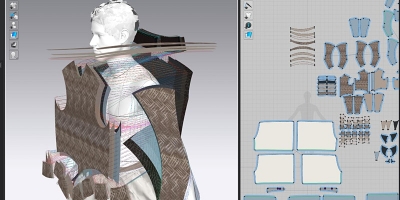08 February 2021 - 17 h 30 min - 18 h 30 min

Hardly any renaissance clothing worn by the non-elites survives in museum collections, so how can we experience the visual and material qualities of everyday renaissance fashion? This talk will explore the imaginative reconstruction of a doublet described in the post-mortem inventory of a seventeenth-century Florentine waterseller, currently being made by the Refashioning the Renaissance Project in collaboration with skilled makers and digital experts. The talk will explore how we might recreate an object that only survives in a brief written description by using a combination of sources and methods, while combining historical and cutting-edge making techniques, and will also address some of the advantages and pitfalls of these methods. It will describe the inspirations, research, and process of creating a full-size material reconstruction and digital animation of the waterseller’s ‘nasty black doublet,’ and will argue that his ‘nasty’ clothing actually represents key renaissance fashion innovations for the middling or popular class.
Sophie Pitman is the postdoctoral research fellow on the ERC-funded Refashioning the Renaissance Project based at Aalto University, where she leads the experimental strand of research. She holds a PhD in History from Cambridge University (2017), and was formerly a postdoc on the Making and Knowing Project (Columbia). Her research and publications explore issues of luxury and the everyday, sumptuary law, and artisanal knowledge in early modern clothing, textiles, and material culture, and she is interested in reconstruction as a methodology.

